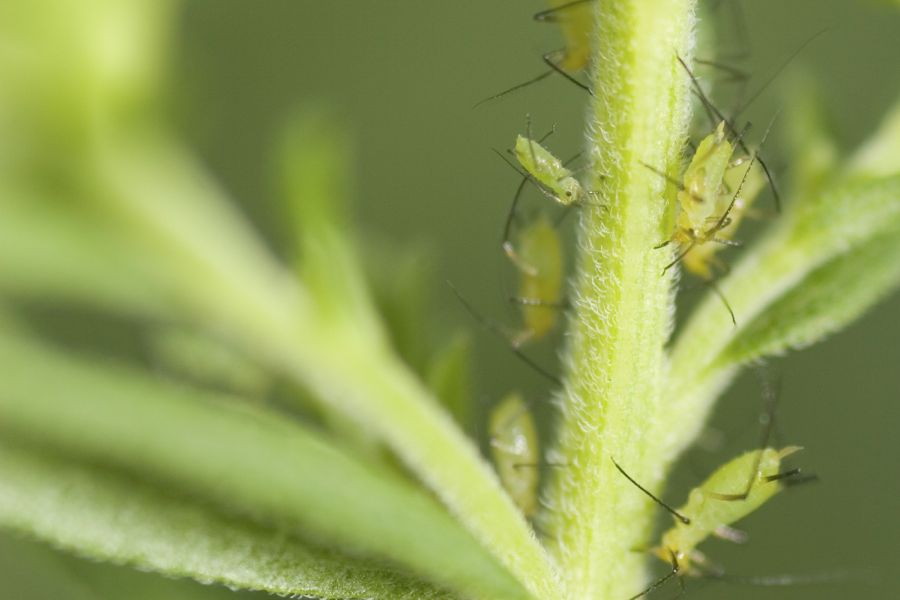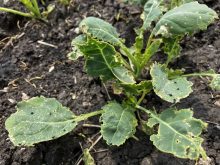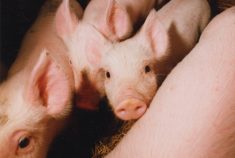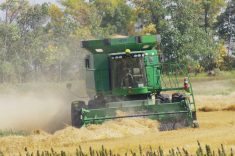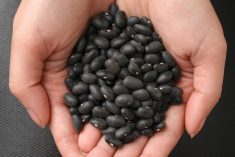Potato virus Y, a plant pathogenic virus, has recently come to the renewed attention of local and national researchers. Spread via aphids, the disease has long been recognized by its foliar symptoms and resulting crop losses.
But the virus is changing. Recently, newer strains of PVY have begun producing tuber symptoms as well as foliar symptoms, which is a “game changer” for the industry, according to Tracy Shinners-Carnelley, director of research and quality enhancement for Peak of the Market.
According to Vikram Bisht, plant pathologist for Manitoba Agriculture, Food and Rural Development, there are currently four strains of PVY of concern to provincial growers.
Read Also

Manitoba canola industry has new frontiers
Canola oil is still the main priority for the sector, but canola meal is increasingly the subject of research looking for new markets and uses for the oilseed’s byproduct.
PVYO, the predominant strain in Manitoba for many years, causes severe foliar symptoms but no tuber defects. PVYN, the tobacco necrosis strain, causes mild foliar symptoms and no tuber defects. PVYNTN (tuber necrosis strain) and PVYN:O are recombinants between PVYO and PVYN strains. Most isolates of PVYNTN can cause potato tuber necrotic ringspot disease in susceptible varieties, while most isolates of PVYN:O do not.
National survey
Bisht is participating in a national survey for PVY strain distribution in Canada organized by Mathuresh Singh of New Brunswick’s Agriculture Certification Services, co-ordinating the collection of Manitoba samples for testing. Based on the 2013 survey results, necrotic strains are increasing in percentage in the region. Strain identification surveys will continue in the 2014 growing season.
Infection with necrotic strains of PVY can render table potatoes unmarketable. “Different strains cause different symptoms,” says Shinners-Carnelley. “Yukon Gold, a common fresh potato variety, gets very distinctive necrotic rings on the surface.”
Other fresh market potato varieties, when infected, may show growth cracking symptoms.
For seed potato growers, infection with PVY is a serious problem, as it can downgrade crop quality and cause seed certification issues.
Any species of aphid can vector PVY, whether or not it colonizes potato, as the virus spreads when aphids probe the plants with their mouthparts as they move through fields looking for a host.
The first step to controlling PVY is planting inoculum-free seed, says Shinners-Carnelley. “If you plant clean seed, meaning no PVY, and you have aphids colonizing and reproducing, they’re feeding on the crop but not spreading the virus around,” she says.
- From the Country Guide website: Plotting a course for 2014
Monitor
If inoculum does exist in a field, growers must ensure they monitor aphid populations and keep abreast of the regional aphid situation. In Manitoba, the most common culprits at risk for spreading PVY are cereal aphids, soybean aphids and green peach aphids, which while fewer in number are the most efficient vector for PVY. Bisht is involved in monitoring aphid populations using aphid traps in seed potato fields and providing weekly updates to growers.
“One of the things you see is the influx of aphids mid- to later summer when you see other crops maturing,” says Shinners-Carnelley.
Insecticide use can have merit in controlling potato-colonizing aphid populations, she says, but growers should remember that spraying one day will have little impact if a flush of aphids comes in the next days from a cereal crop being harvested.
Crop oils are a promising new control strategy and have been shown to be effective against aphids.
A researcher at the University of Minnesota, Ian MacRae, has done studies analyzing the efficacy of crop borders in managing PVY. His team’s research shows that aphids tend to settle on the edges of fields prior to moving throughout the fields. Targeting crop borders with insecticides can be an effective strategy against PVY, especially in combination with the use of crop oils and other integrated pest management strategies.
Message
Shinners-Carnelley’s message is not that there is more of a problem with PVY than there has been in the past in Manitoba, but rather that as the virus mutates growers should be on the lookout for new symptoms.
“For the most part our growers — seed and commercial — do a good job at keeping their PVY levels low,” she says. “I don’t want the message to be that we have a problem, but we should be proactive. Whether we’re growing fresh, processing or seed potatoes, we have to be aware of PVY as it has the potential to cause economic damage to all those sectors.”





